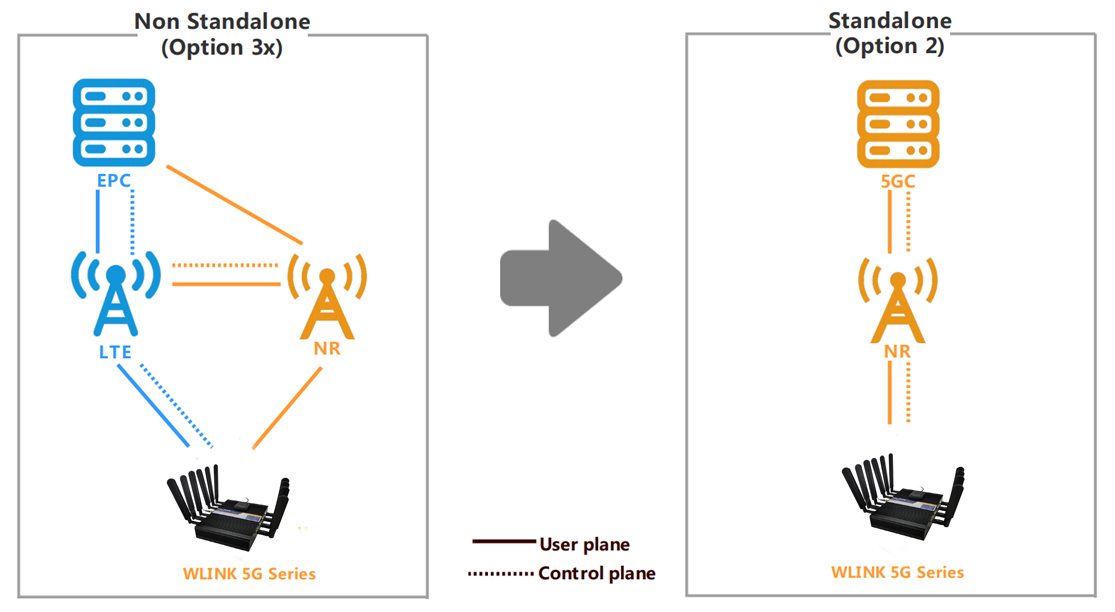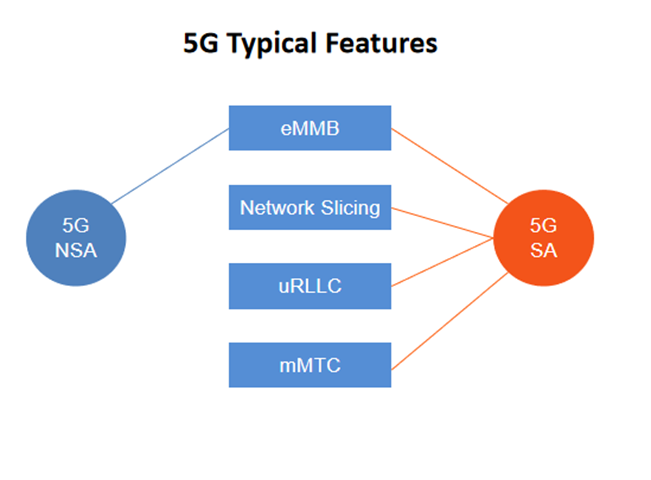
HOME < Technology < 5G NSA and SA Difference
1. What is NSA and SA in 5G?
Two major 5G deployment alternatives are defined by 3GPP (Global Initiative creating standards for mobile networks): NSA (Non-Stand Alone) and SA (Stand Alone).
NSA (Non-Stand Alone): The radio part of the terminal is connected to 5G NR (New Radio), the core part of the NR is connected to 4G EPC (Evolved Packet Core)
SA (Stand Alone): The core part of the NR is connected to 5GC (5G core)
2. The evolution from NSA to SA 5G
The mobile communication network, composed of base station, bearer network, and core network.
In the NSA and SA 5G, it refers to the deployment method of base station and core network.

Control plane is protocols for which controlling the radio access bearers and the connection between the UE (user equipment) and the network.
User plane is responsible for the transfer of user data, such as voice or application data through the access stratum.
It is very expensive for operators to deploy SA 5G directly, so upgrading to NSA with existing network architecture and then migrating to SA 5G is the most common scenario. The NSA can be upgraded based on the existing 4G base station, which not only saves costs, but can also be quickly deployed.
3. What’s the main difference between NSA and SA
3.1 Architecture Difference
The NSA mainly exists as a transitional network architecture, which can make full use of existing 4G network resources. The SA architecture will be the ultimate goal of 5G network evolution
We can see that the main difference is whether the core network is 5GC or EPC
The ultimate goal may be a 5G network like option 2, but the NSA network will continue to serve users for a long time.
3.2 Technical Difference
The SA 5G NR will use enhanced mobile broadband (eMBB), Ultra-Reliable and Low Latency Communications (URLLC), and huge machine-type communications (mMTC), enables more advanced network slicing capabilities, helping operators rapidly transition to both 5G New Radio (NR) and 5G as the core network.
NSA 5G doesn’t support Network slicing, URLLC, and mMTC. However, it fundamentally concentrates on eMBB as carrier aggregation dynamic spectrum sharing, where 5G-supported handsets and devices will make use of mmWave frequencies for increased data capacity but will continue to use existing 4G infrastructure for data and voice communications.

-- The end











